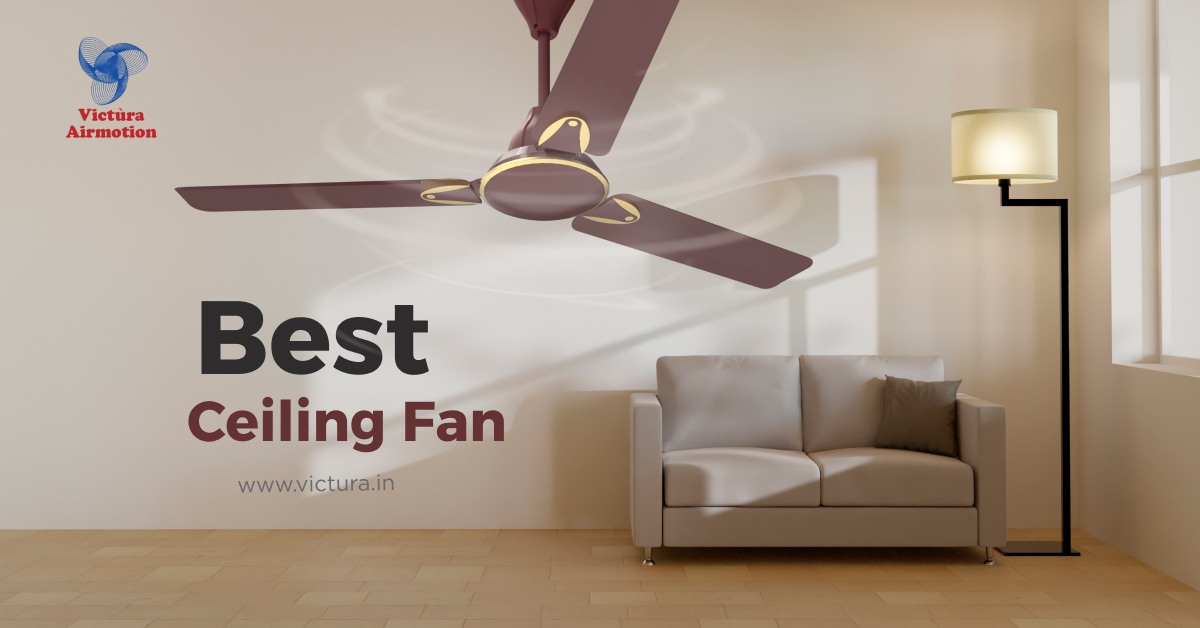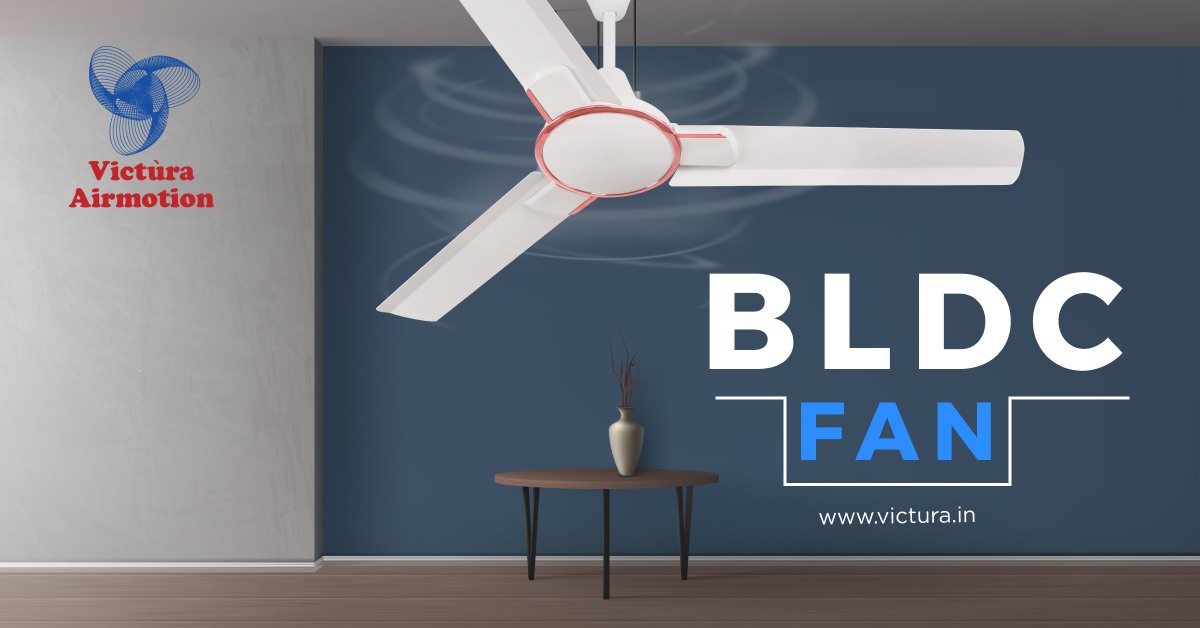Tired of sitting in your own pool of sweat during the hot Indian summers? A BLDC fan is the perfect solution for you. Summers have been relentless lately, haven’t they? Just think about all the times you’ve been out for even 10 minutes and came back home drenched in sweat. It’s probably happened quite often.
So, how can a BLDC fan help in this situation? Good question! A BLDC fan is actually a super improved version of a regular fan. But there’s a twist—not all ways to stay cool mean high bills or big machines. By getting a BLDC fan for your home this summer, you’ll be doing your body and mind a huge favour. And who knows, maybe there’s a few benefits for the winter as well?
Let’s learn why BLDC tech is important for keeping your room cool and how you can use it well.
What is BLDC Ceiling Fan Technology?
A Brushless Direct Current motor. That’s the big secret behind the efficiency of BLDC fans. Here’s the thing: a normal fan motor works on brushed motors. This old fan tech uses a lot of power, like 70-90 watts, and can make your power bill shoot up. But a BLDC fan? It uses way less power, just about 25-35 watts.
Is power consumption the only advantage? Of course not. A BLDC fan is like a mystery box; it comes with many surprises. Better air delivery, silent function, efficiency, durability, longevity, etc., are among the greatest advantages of a BLDC fan. Lower electricity bill is just the perfect cherry on top.
Benefits of BLDC Ceiling Fans
Let’s talk specifics: why are so many homeowners switching to BLDC fans?
- Energy Efficiency
A BLDC fan saves up to 65% of electricity compared to traditional fans. Over the course of a year, that’s a significant saving on your power bills, especially in a country where ceiling fans run for long hours. - Works Quietly
No more loud sounds or shaking parts. The fan with no brushes runs smooth and quiet. It’s good for sleep rooms, study spots, and home offices. - Lasts Longer
With not many parts that move and no brushes to break down, BLDC fans stay good for a long time with little need for fixes. - Smart Controls
A lot of types are set with a remote or app control, letting you set the fan speed and more without getting up from your bed or chair. - Stable Performance During Voltage Fluctuations
Indian summers often bring power inconsistencies. To cool your room well, it’s not just about turning on the fan and hoping it helps.
How to Keep Your Room Cool in Summer with BLDC Fans?
Keeping your room cool is not just about starting the fan and hoping it works. Here’s how to get the most from your BLDC fan:
Step 1: Put it Up at the Right Height
Make sure your fan is up 8 to 9 feet over the floor and at least 12 inches away from the ceiling. This spot makes sure the air moves well and covers all over the room.
Step 2: Fan Size Matters
A tiny fan in a big room literally so useless. Pick a fan that fits your room.
Here’s the blade sweep for every room:
- Up to 75 sq. ft.: 900mm
- Up to 144 sq. ft.: 1200mm
- Over 200 sq. ft.: Either 1400mm+ or just get two fans
Step 3: Use Smart Options
Use the remote or app to set the speed. In hot afternoon times, use full speed. Low speeds are good too sometimes, for more of a breezy feel at late night or early morning.
Step 4: Keep Curtains or Blinds Closed
Keep out sun to stop the room from getting hot. Close blinds or pick light-colored curtains to send back heat.
Step 5: Open Windows or Use Other Fans
Open a window to let air move. Use it with other fans to push out hot air, making your fan cool better.
Step 6: Turn Off Extra Heat Things
Stop using lights and tools you don’t need, as they make heat. BLDC fans don’t make much heat like old ones.

How the Direction of the Fan Can Affect the Movement of Air
Here’s a small but crucial detail most people overlook: fan direction.
Counter-clockwise (Summer Mode)
In summer, your BLDC ceiling fan should rotate counter-clockwise. This pushes air downward, creating a cooling breeze that evaporates sweat and lowers your body temperature.
Clockwise (Winter Mode)
Some BLDC fans have a reverse mode, which is useful in winter to circulate warm air without chilling you. In this case, the fan draws cooler air up and pushes warmer air from the ceiling down along the walls.
Double-check the direction of the fan when you switch it on. The difference in airflow can be dramatic.
Tricks to Optimize Airflow in the Room
Now that you’ve got your BLDC fan up and running, let’s level up:
- Keep Furniture Low or Airflow-Friendly
Avoid blocking airflow with tall furniture. If possible, rearrange your room to keep a clear path for air movement. - Add Floor or Table Fans for Circulation
In especially large rooms, adding a portable fan can assist airflow from the ceiling fan and spread it better across the room. - Switch Off When Not Needed
Unlike air conditioners, fans don’t cool the air—they circulate it. So, if no one’s in the room, switch it off to save power. - Use with Air Conditioning (Smartly)
A BLDC fan can reduce your reliance on AC. Set the AC to a higher temperature (like 27°C) and let the fan do the rest—circulating the cool air more effectively. - Clean Fan Blades Regularly
Dusty blades reduce performance. A monthly clean keeps airflow strong and efficient.
Conclusion
As we’ve already seen so far, BLDC fan advantages are quite endless. The list just goes on and on. But it’s better to have a long list of advantages than to have a long electricity bill, right? You don’t really need expensive cooling systems; you just need a better fan that can circulate the air better. Switching to BLDC technology can help you a lot.
Don’t just survive the heat this summer, live comfortably. If the heat won’t let you be in peace in your own home, you have to find ways to outsmart it. The best ceiling fans can help you do that. So, get one today.
Frequently Asked Questions
Q1. How to make a room colder with a ceiling fan?
In summer, set your fan to spin the other way. This moves air down, making a cool breeze that feels cold, even if the heat is the same. Also, keep windows a bit open to let air move well.
Q2. What are the disadvantages of ceiling fans?
Ceiling fans do not lower the heat in a room—they just move air to make you cool. They also need you to clean them often to stop dust, and in spaces with bad air flow, they only move warm air around, which doesn’t help much.
Q3. Do ceiling fans use a lot of electricity?
Old ceiling fans use about 70-80 watts, which is not much. But BLDC ceiling fans are better, using only 25-35 watts. This helps you save a lot on power bills as time goes on.
Q4. How to cool a room without AC?
Use a BLDC ceiling fan, shut curtains when the sun is high, open windows for air flow in the morning/evening, put indoor plants around, and do not use heat-making tools during the day. Light covers and air-getting fabrics help too.
Q5. Which direction is best for ceiling fan?
In summer, make your fan turn the other way to push cool air down. In winter, change it to go slow and the other way to pull cool air up and move warm air stuck near the ceiling.
Q6. How do you push hot air out of a room?
Open windows on two sides for air to flow through. Use a fan on the ground near a window to pull in cool air or push hot air out. Ceiling fans move the air well when used with these steps.
